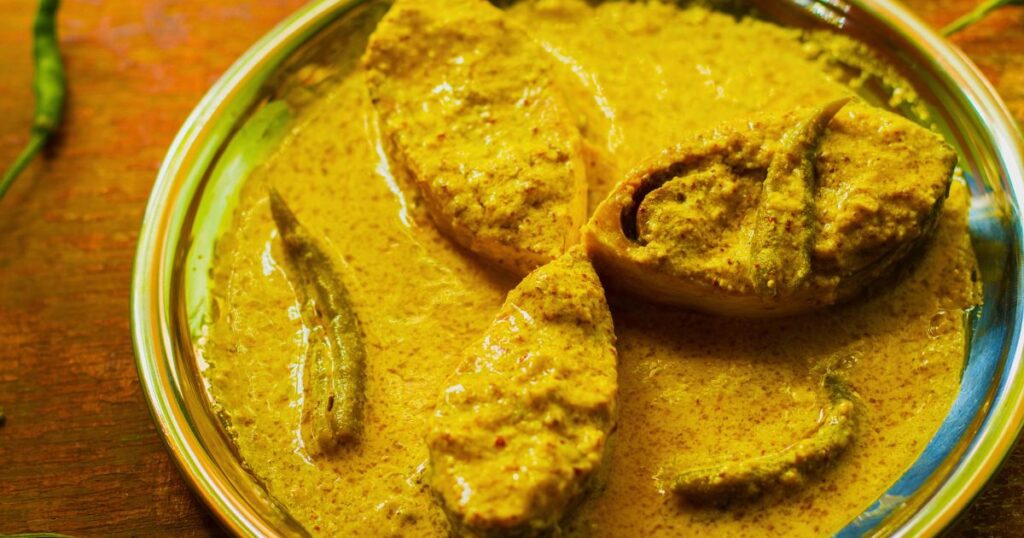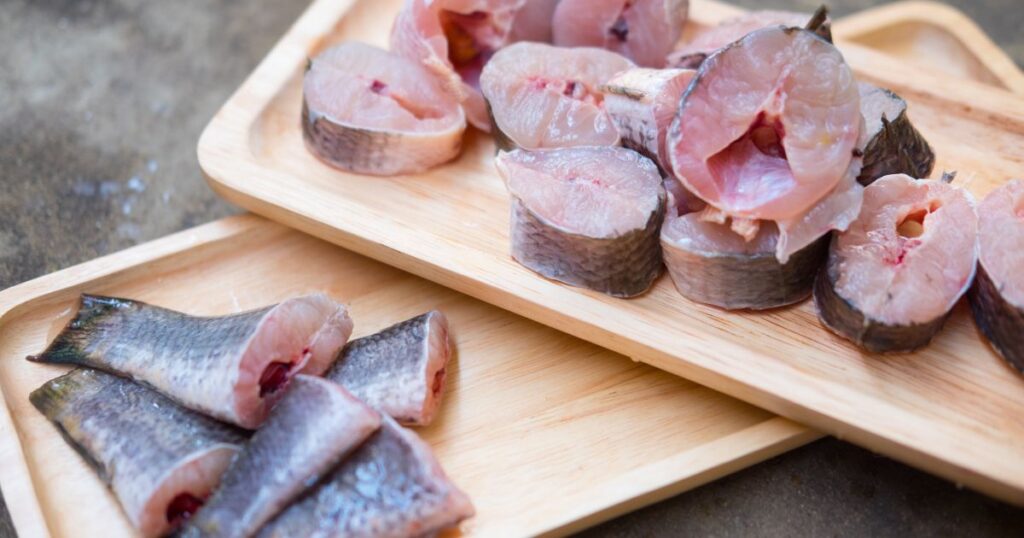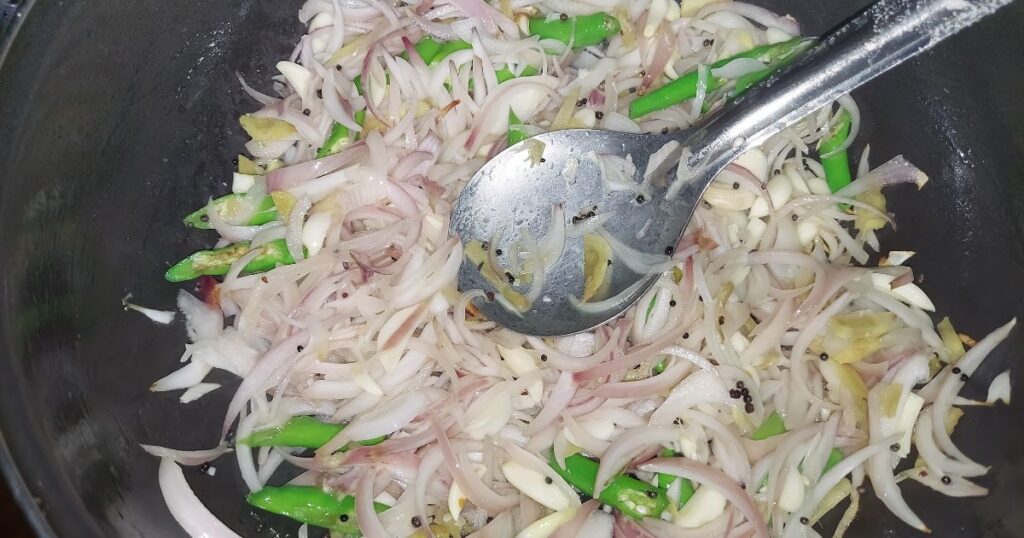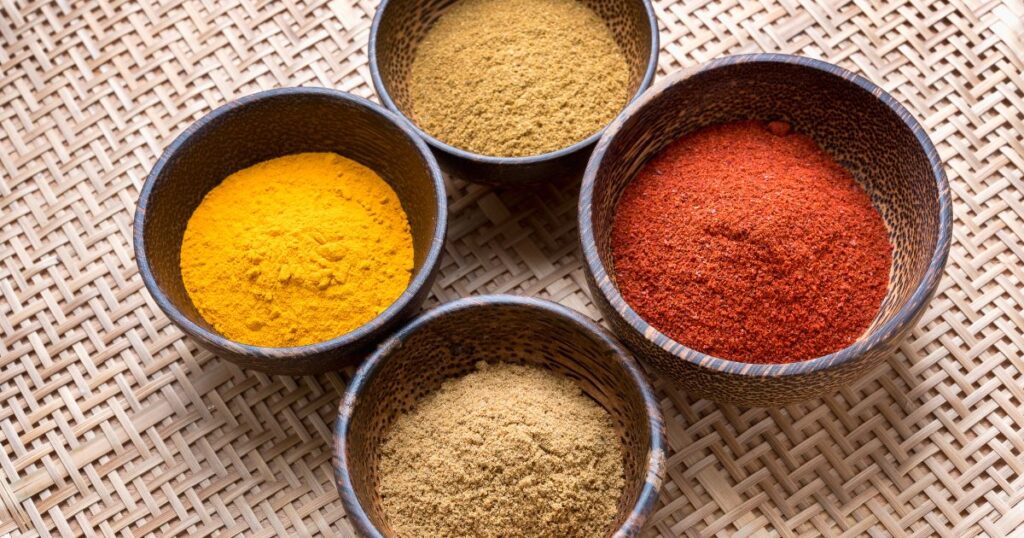In the vibrant varieties of Indian cuisine, few dishes hold much important and flavor as the beloved mustard fish curry. Shout for joy from the coastal regions of India, mainly West Bengal, Odisha, and Goa, this delicious masterpiece the delicate flavors of fresh fish with the bold, strong notes of mustard seeds and spices. Lets join me on a culinary adventure as I’m gonna reveal the secrets of craftsmanship the perfect mustard fish curry.

About Mustard Fish Curry
Mustard Fish Curry is a tender, juicy, and full-of-flavor dish. With each bite you will find culture and tradition that has been woven into every dish. For in this simple mustard fish curry, they taste the history of some states in India. As the aroma of mustard fish curry fills the kitchen, everyone is going to love your dish, just follow my step by step recipe.
Preparation of Mustard Fish Curry/ Bengali Mustard Fish Curry
Ingredients
- Fresh fish fillets (such as tilapia, cod, or haddock) – 500g
- Mustard oil – 4 tablespoons
- Mustard seeds – 2 tablespoons
- Turmeric powder – 1 teaspoon
- Red chili powder – 1 teaspoon
- Tamarind paste – 2 tablespoons
- Salt – to taste
- Fresh coriander leaves – for garnish
- Tomatoes – 2 large, chopped
- Green chilies – 2, sliced
- Garlic cloves – 4, minced
- Ginger – 1-inch piece, grated
- Onion – 1 large, finely chopped
Instructions
Step 1
Soak mustard seeds, and cumin seeds in water for 15 mins. Now take a mixer jar, add the soaked mustard seeds, cumin seeds, and green chili, and make a smooth paste.

- Preparation of Fish:
Start by washing the fish pieces under cold water, make sure they are clean and free from any scales or impurities. Soak them dry using paper towels and cut them into medium-sized pieces, cut the fish in uniform for even cooking. Marinate the fish pieces with a pinch of salt and turmeric powder, rubbing the spices gently into the flesh. Keep the fish aside for marinate, while you prepare the curry base.

- Tempering the Mustard Seeds:
Heat mustard oil in a heavy-bottom pan or kadhai over medium heat. Once the oil is hot, add mustard seeds and let them to splutter and release their aroma. This step is most important as it infuse the oil with the flavor of mustard, which create the backbone of this curry.
- Building the Flavor Base:
Add minced garlic and grated ginger to the pan and saute till they turn golden brown color and aromatic. Then, add finely chopped onions and cook until they turn translucent and soft. Stir the chopped tomatoes and sliced green chilies, allowing them to cook down until the tomatoes are soft and pulpy, creating a rich, and a flavorful base for the curry.

- Spicing it Up:
Once the tomatoes have cooked perfectly, it’s time to add the spices. Add turmeric powder and red chili powder to the masala, and adjust the quantity according to your required level of spiciness. Stir the spices into the mixture, Let them release their flavors, and infuse the curry base with warmth and depth.

- Adding Tangy Tamarind: (totally optional)
Now, add the tamarind paste to the pan, stirring it into the curry base until it is well combined. The tanginess of the tamarind cuts through the richness of the mustard and spices, balancing the flavors and adding a delightful taste to the dish. - Introducing the Fish:
Carefully place the marinated fish pieces into the pan, make sure they are nestled snugly into the curry base. Gently add some of the hot curry sauce over the fish pieces by a spoon, allow them to soak up the flavors as they simmer and cook. - Simmering to Perfection:
Cover the pan and let the curry simmer gently over low heat for about 10-15 minutes, or until the fish is cooked through and flakes easily with a fork. Do not overcook the fish, as it can become tough and rubbery. - Finishing Touches:
Once the fish is cooked, remove the lid and check the season, add more salt or spices if needed. Garnish the mustard fish curry with freshly chopped coriander leaves, which add a burst of freshness and color to the mustard fish curry. - Serving Suggestions:
Serve the hot mustard fish curry, take along with steamed rice or crusty bread to soak up the flavorful sauce. The blend of tender fish with the tangy, spicy flavor of mustard and spices will surely delight your taste buds and transport you to the sun-soaked shores of coastal India. - Enjoying the Feast:
Gather around the table with family and friends and enjoy every bite of this aromatic and delicious dish. Let the conversation flow as you enjoy the deliciousness of Mustard Fish Curry, celebrating the richness of Indian cuisine and the joy of sharing food.
Step 2
Mustard Fish Curry Odia style
- Take fish and marinate with turmeric powder and salt and let it marinate for 15-20 minutes.
- Soak mustard seeds, and cumin seeds in water for 15 mins. Now take a mixer jar, add the soaked mustard seeds, cumin seeds, and green chili, and make a smooth paste.
- Take a frying pan heat mustard oil over high flame, now add marinated fish from both side as cooked 70%.
- In the same pan, heat oil and add chopped onions cook till golden brown color. Now add ginger garlic paste and stir till the smell vanishes.
- Now add chopped tomato/paste, and salt. Stir till the they soft and pulpy.
- Add the turmeric powder, coriander powder, red chili powder, and pour some water into the masala and saute it.
- Pour the mustard paste and stir it, until the raw smell disappears and oil start leaves oil from the masala.
- Introduce the Fish into the masala and let it cook for 10-15 minutes in low flame.
- Remove it from the heat, garnish with fresh coriander leafs and slit green chili.
- Serve the Mustard fish curry with hot Rice.
FAQ For Mustard Fish Curry
What type of fish is best for making Mustard Fish Curry?
Best Fish for Curry
Tilapia.
Snapper.
Barramundi.
Cod (all types)
Halibut.
Basa.
Ling
You can use a variety of fish for making mustard fish curry, such as tilapia, cod, haddock, or any firm-fleshed fish. Choose fresh fish fillets that are available in your region.
Can I use mustard paste instead of mustard seeds in the curry?
While mustard seeds are an important part of making mustard fish curry, you can substitute mustard paste if you don’t have seeds available. However, adjust the quantity according to your taste preference, because mustard paste has a strong taste.
Is it necessary to use mustard oil for cooking Mustard Fish Curry?
Yes, mustard oil is a key ingredient in mustard fish curry as it adds a strong flavor and aroma to the dish. If you cannot find mustard oil, you can use vegetable oil as a alternate, but it will change the authentic taste of the curry.
How spicy is Mustard Fish Curry?
The spiciness of mustard fish curry can be adjusted according to your preference by controlling the amount of chili powder or green chilies used in the recipe. You can adjust the spiciness of the dish as it will make spicier as per your taste base.
Can I prepare Mustard Fish Curry in advance?
Yes, you can prepare mustard fish curry in advance and store it in the refrigerator for up to 2-3 days. You just have to reheat it gently on the stove or in the microwave before serving, adding a needy amount of water if needed to adjust the consistency.
Mustard fish curry is not just a dish, it’s a tasty journey that makes the different flavors of Indian dishes. So lets gather all needy ingredients, and start a flavorful journey as you master the art of making mustard fish curry in your own kitchen. With its bold spices, tangy taste of tender, and juicy fish, which leaves you craving for more. Happy Eating.
Nutrition Information
| Nutrient | Amount Per Serving |
|---|---|
| Calories | 263 |
| Carbohydrates | 10g |
| Protein | 29g |
| Total Fat | 11g |
| – Saturated Fat | 1.5g |
| – Polyunsaturated Fat | 3g |
| – Monounsaturated Fat | 5g |
| Trans Fat | 0g |
| Cholesterol | 83mg |
| Sodium | 619mg |
| Potassium | 729mg |
| Fiber | 2g |
| Sugar | 4g |
| Vitamin A | 980IU |
| Vitamin C | 40mg |
| Calcium | 61mg |
| Iron | 2.7mg |
Note: Nutritional values are approximate and may vary depending on specific ingredients used and cooking methods.

